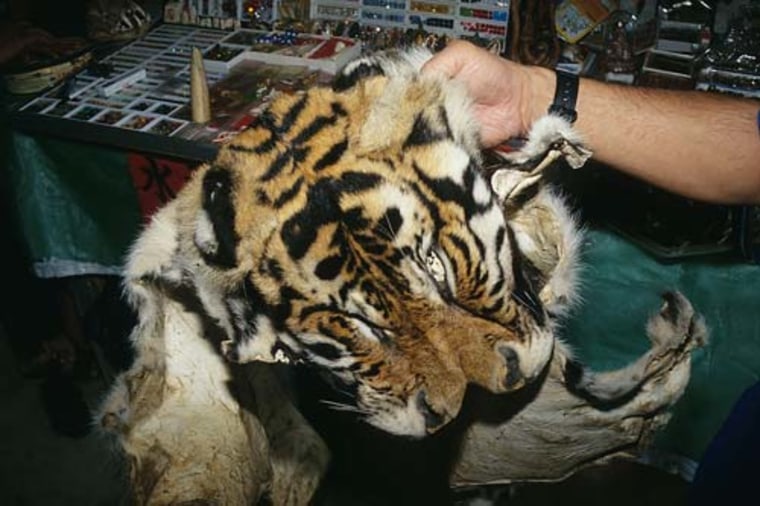Body parts from more than 1,000 wild tigers have been seized over the past decade, crimes that are adding to the extinction crisis faced by the species whose numbers are estimated at around just 3,200 worldwide, a wildlife monitoring network reported Tuesday.
"Parts of between 1,069 and 1,220 tigers were seized in 11 of the 13 tiger range countries — or an average of 104 to 119 animals per year," TRAFFIC said in a report ahead of an international meeting later this month to protect the species.
India was highest on the list, followed by China and Nepal.
"Given half the world’s tigers live in India, it’s no real surprise the country has the highest number of seizures," report author Pauline Verheij said in a statement.
"With parts of potentially more than 100 wild Tigers actually seized each year," she added, "one can only speculate what the true numbers of animals are being plundered."

Tiger items that are smuggle range from complete skins, skeletons and even whole animals — live and dead — to bones, meat, claws, teeth, skulls, penises and other body parts, TRAFFIC said. The parts are used by various cultures for decoration, in traditional medicines and even as good luck charms.
"Clearly enforcement efforts to date are either ineffective or an insufficient deterrent," stated Mike Baltzer, leader of WWF’s Tigers Alive initiative.
"Not only must the risk of getting caught increase significantly, but seizures and arrests must also be followed up by swift prosecution and adequate sentencing," he said.
Besides poaching, the other main pressure on tigers is habitat loss.
Some 100,000 tigers are thought to have been around a century ago, TRAFFIC said.
TRAFFIC is a joint program of WWF and the IUCN, the International Union for Conservation of Nature.
